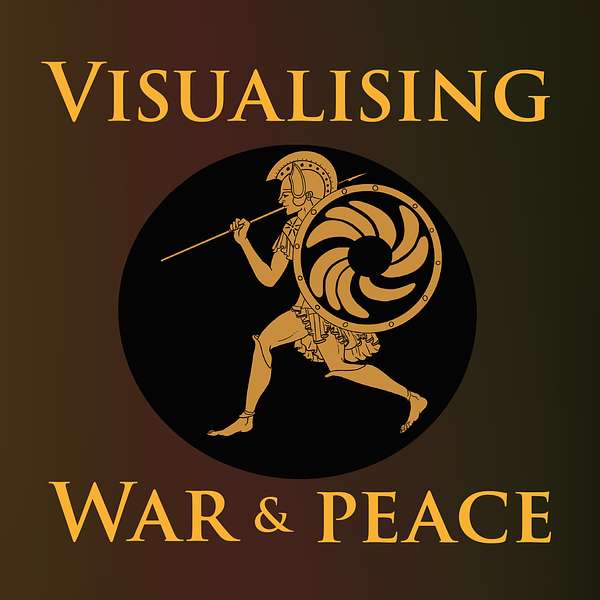
Visualising War and Peace
How do war stories work? And what do they do to us? Join University of St Andrews historian Alice König and colleagues as they explore how war and peace get presented in art, text, film and music. With the help of expert guests, they unpick conflict stories from all sorts of different periods and places. And they ask how the tales we tell and the pictures we paint of peace and war influence us as individuals and shape the societies we live in.
Visualising War and Peace
Visualising War through Cosplay with Katarina Birkedal
This week’s podcast continues our mini-series on visualising war through gaming. Alice and Nicolas’s guest is Dr Katarina Birkedal, who holds a PhD in International Relations from the University of St Andrews; her thesis is entitled ‘Resistance, Reproduction, Attachment: Unsettling gender through cosplay.’ Until 2021, Katarina was postdoctoral Research fellow on the Visualising War project. Drawing on literature, theory, and methodology from diverse fields, from archaeology to film studies, her research explores the role of stories in politics, whether they be those told in popular culture, the history lessons taught in school, or the narrative of world order presented by theories. As the title of her thesis reveals, Katarina has a special interest in cosplay, which she also pursues actively herself.
Cosplay, and what it can tell us about representations of war and violence, is, not surprisingly, one of the topics that we discuss with Katarina on the show. But that is not all. Among the topics we explore with her, are
– how (childhood) stories shape our memories of wars, even when those wars happened a long time before we were born
– how stories in various media and popular culture, including cosplay, reflect and influence ideas about conflict
– how active involvement in cultural practices such as cosplay is a chance to challenge dominating, often stereotypical narratives of conflict
– conflict and gender roles, in popular culture, cosplay and beyond
– the militarisation of popular culture in Norway and Britain
– cultures of memorialisation: what is remembered and how, and what isn’t, and why
– boundaries between stories and reality
– how representations of war and conflict in popular culture might shape our ideas of the future of warfare
We hope you enjoy the episode!
For a version of our podcast with close captions, please go to our YouTube channel. You can find out more about Dr Katarina Birkedal’s work on her website at the Centre for Arts and Politics at the University of St Andrews. Be sure also to check out Katarina’s blog posts on the Visualising War website.
For more information about the Visualising War project, individuals and their projects, access to resources and more, please have a look on the University of St Andrews Visualising War website.
Music composed by Jonathan Young
Sound mixing by Zofia Guertin